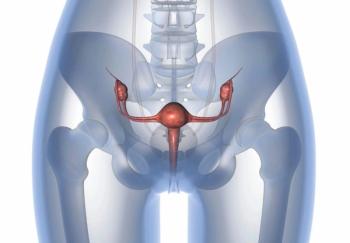
- ONCOLOGY Vol 12 No 6
- Volume 12
- Issue 6
M. D. Anderson Initiates Aggressive Ovarian Cancer Screening Program
Approximately, 27,000 new cases of ovarian cancer are reported in the United States each year, and about 15,000 of those result in death. The 5-year survival rate of patients with advanced disease is about 50%. However, when cancer is diagnosed
Approximately, 27,000 new cases of ovarian cancer are reported in the United States each year, and about 15,000 of those result in death. The 5-year survival rate of patients with advanced disease is about 50%. However, when cancer is diagnosed while still limited to the ovaries, the 5-year survival rate soars to 91%.
In light of those statistics, M. D. Anderson Cancer Center has initiated a comprehensive screening program that encourages women at high risk to come in for periodic review. The program is directed by Dr. Diane C. Bodurka, assistant professor in M. D. Andersons Department of Gynecologic Oncology.
The new screening program is geared to those whose risk of developing the disease is increased because they:
- have previously had breast cancer;
- have a first-degree relative (mother, sister, or daughter) who has had breast or ovarian cancer;
- have been ovulating a long time (early menarche, late menopause);
- are of Ashkenazi (Eastern European Jewish) descent; or
- have abnormalities in BRCA1 or BRCA2, the breast and ovarian cancer susceptibility genes.
Screening Program
During the initial evaluation, a womans medical history is taken and a physical and pelvic (including rectal) examination are performed. Blood is then drawn to test for the presence of CA-125, a marker for ovarian cancer. The patient goes home with a detailed family history form to complete. The information from that form, along with the results of the tests, helps Dr. Bodurka estimate the womans risk of developing ovarian cancer.
If all of the findings are negative, the woman is advised to have a pelvic examination and CA-125 test every 6 months and a transvaginal ultrasound once a year.
However, if the initial screening reveals any abnormalities, the individual is counseled during the second visit about her risk and undergoes an ultrasound pelvic examination using a transvaginal probe. Further negative results, on top of a strong family history of cancer, may lead to a recommendation for more testing through the Breast and Ovarian Cancer Genetic Program. Then, if even more evidence suggests an abnormality in the ovaries, Dr. Bodurka may recommend a color-flow Doppler ultrasound.
Results from this procedure can help characterize a mass as benign or malignant. A benign mass, often a cyst, can be followed over time; however, when the mass is a potential malignancy, the patient is counseled about treatment options.
Aggressive Experimental Treatment
Researchers at M. D. Anderson also have recently combined stem-cell infusion with chemotherapy to create an aggressive experimental treatment plan for combating advanced stages of ovarian cancer. Chemotherapy successfully attacks ovarian cancer cells, but "few patients are cured because very small groups of cells survive, leading to a recurrence," says Dr. Richard E. Champlin, principal investigator of the research team. Dr. Champlins strategy is to triple the dose of the chemotherapy and allay the toxic effect on the bone marrow by infusing the patients own healthy blood progenitor (stem) cells (removed after the patient recovers from surgery and before chemotherapy) into the bloodstream to help the bone marrow recover.
The study enrolls patients who have been newly diagnosed with stage III or IV ovarian cancer. Patients are treated with high doses of carboplatin (Paraplatin) and paclitaxel (Taxol), and after each round of chemotherapy, stem cells are reinfused into the bloodstream. Granulocyte colony-stimulating factor (G-CSF [Neupogen]) is administered to boost the number of stem cells in the blood. When the count is high, blood is withdrawn and the stem cells are filtered out and stored. The rest of the blood is returned to the body.
Twenty patients have received this treatment so far and, according to Dr. Champlin, "its been well tolerated and very effective in achieving remission."
Articles in this issue
over 27 years ago
Radiofrequency Waves Used to Kill Inoperable Liver Tumorsover 27 years ago
ONS Receives Educational Grants to Fund Conferencesover 27 years ago
Salvage Therapy for Ovarian Cancerover 27 years ago
Women’s Dissatisfaction With Body Image Can Affect Smokingover 27 years ago
Gene May Provide Specific Target For Attacking Prostate Cancerover 27 years ago
Medicare Now Reimburses Cancer Patients for Granisetron TabletsNewsletter
Stay up to date on recent advances in the multidisciplinary approach to cancer.
















































































